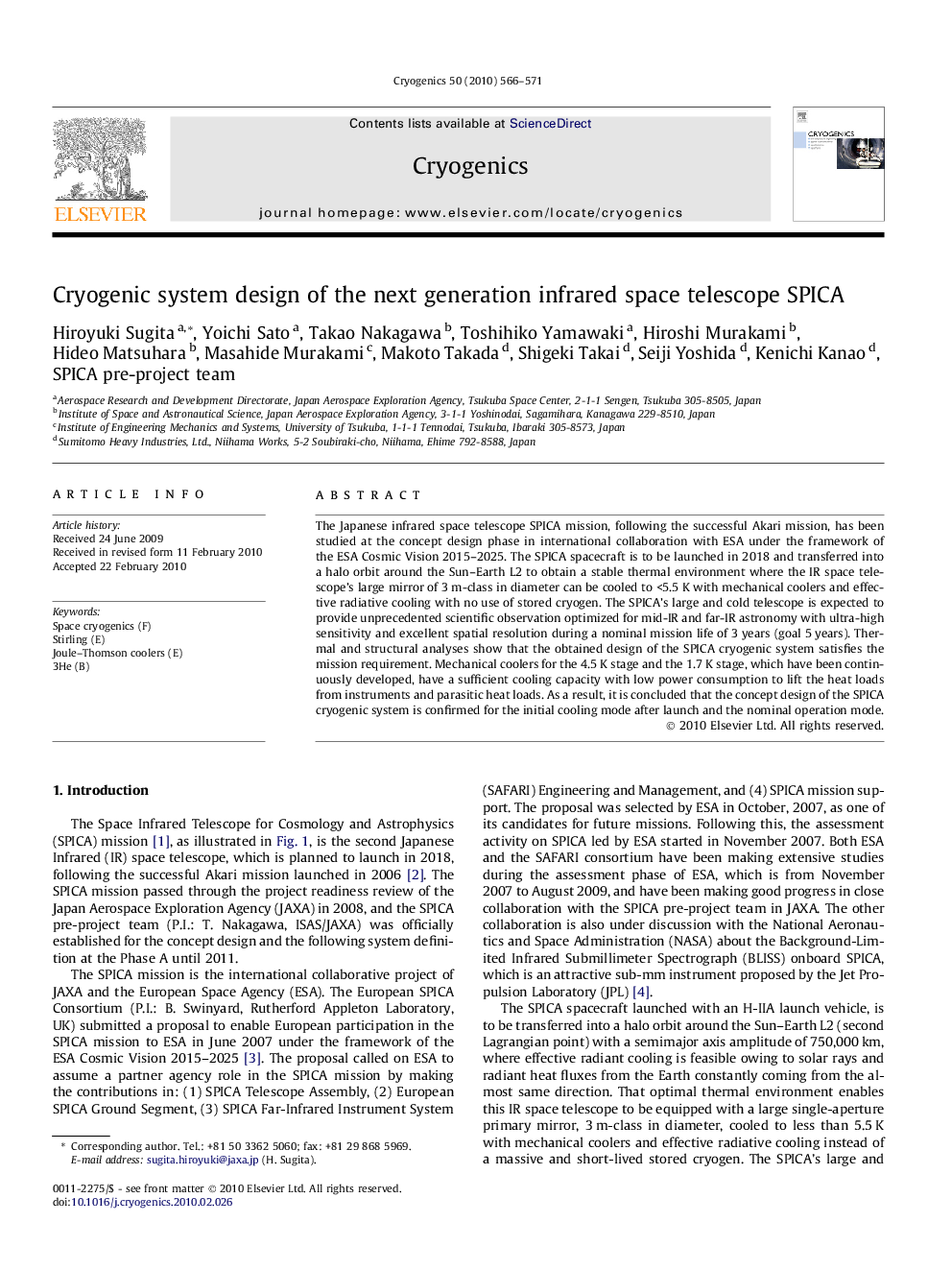| Article ID | Journal | Published Year | Pages | File Type |
|---|---|---|---|---|
| 1507967 | Cryogenics | 2010 | 6 Pages |
The Japanese infrared space telescope SPICA mission, following the successful Akari mission, has been studied at the concept design phase in international collaboration with ESA under the framework of the ESA Cosmic Vision 2015–2025. The SPICA spacecraft is to be launched in 2018 and transferred into a halo orbit around the Sun–Earth L2 to obtain a stable thermal environment where the IR space telescope’s large mirror of 3 m-class in diameter can be cooled to <5.5 K with mechanical coolers and effective radiative cooling with no use of stored cryogen. The SPICA’s large and cold telescope is expected to provide unprecedented scientific observation optimized for mid-IR and far-IR astronomy with ultra-high sensitivity and excellent spatial resolution during a nominal mission life of 3 years (goal 5 years). Thermal and structural analyses show that the obtained design of the SPICA cryogenic system satisfies the mission requirement. Mechanical coolers for the 4.5 K stage and the 1.7 K stage, which have been continuously developed, have a sufficient cooling capacity with low power consumption to lift the heat loads from instruments and parasitic heat loads. As a result, it is concluded that the concept design of the SPICA cryogenic system is confirmed for the initial cooling mode after launch and the nominal operation mode.
